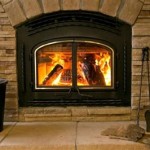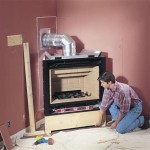Gas Fireplace Pilot Light Goes Out On Its Own
A gas fireplace offers warmth and ambiance, often becoming a focal point in a home during colder months. However, a common issue that homeowners face is the pilot light extinguishing unexpectedly. This occurrence can be frustrating and lead to a non-functional fireplace, negating its intended benefits. Understanding the reasons behind this malfunction is crucial for effective troubleshooting and, if necessary, professional repair. Several factors, ranging from simple drafts to complex gas supply problems, can contribute to a pilot light’s repeated failure to stay lit. Identifying the root cause is the first step in restoring the fireplace to its proper working order.
The pilot light serves a vital purpose in a gas fireplace. It's a small, continuous flame that ignites the main burner when heat is desired. Without a functioning pilot light, the fireplace is rendered useless. This article will explore the common reasons why a gas fireplace pilot light extinguishes, offering insights into potential solutions and preventative measures.
Thermocouple Malfunction
The thermocouple is a crucial safety device in a gas fireplace. It's a small, metal rod positioned near the pilot light flame. Its function is to generate a small electrical current when heated by the pilot flame. This current signals to the gas valve that the pilot light is lit, allowing the main gas supply to flow when the fireplace is switched on. If the thermocouple fails to generate sufficient current or is damaged, the gas valve will shut off the gas supply to the pilot light, causing it to extinguish.
One of the most common reasons for thermocouple failure is the accumulation of soot or carbon deposits on its surface. These deposits insulate the thermocouple, preventing it from being properly heated by the pilot flame. Over time, heat stress can deteriorate the thermocouple as well. This stress can affect its ability to generate the required electrical current.
To inspect the thermocouple, first, ensure the gas supply to the fireplace is turned off. Allow the fireplace to cool completely before proceeding. Visually examine the thermocouple for any signs of damage, such as cracks, bends, or excessive corrosion. Clean the thermocouple with fine steel wool or a non-abrasive pad to remove any soot or carbon buildup. Ensure the thermocouple is properly positioned within the pilot flame; it should be fully enveloped by the flame. If cleaning and repositioning the thermocouple doesn't resolve the issue, it may need to be replaced. This process typically involves disconnecting the thermocouple from the gas valve and installing a new one, ensuring all connections are secure and properly tightened.
Drafts and Ventilation Issues
Drafts, whether from open windows, doors, or poorly sealed fireplace components, can disrupt the pilot light flame. The constant flow of air can extinguish the flame, especially if it's weak or not properly shielded. Poor ventilation can also contribute to this problem; it can cause the accumulation of combustion byproducts, which can smother the pilot light.
Identify the source of any drafts near the fireplace. Check for gaps around the fireplace surround, the glass doors (if applicable), and the vent. Seal any gaps with weather stripping or caulk to minimize drafts. Ensure adequate ventilation in the room. Avoid blocking air vents or restricting airflow around the fireplace. For fireplaces with direct venting, inspect the vent termination outside the house to ensure it's free from obstructions such as leaves, snow, or debris. A blocked vent can prevent proper exhaust, leading to poor combustion and pilot light issues.
In some cases, the issue may be related to negative air pressure within the house. This can occur if appliances such as exhaust fans or clothes dryers are operating simultaneously, drawing air out of the house and creating a vacuum effect that pulls air down the fireplace chimney. To mitigate this, try slightly opening a window in the room while operating the fireplace to equalize the pressure.
Gas Supply Problems
An inadequate or inconsistent gas supply to the fireplace constitutes another frequent cause of a pilot light extinguishing on its own. This can stem from various issues within the gas line itself, the gas valve, or even the main gas supply to the house. Problems related to gas can be one of the more serious issues, and troubleshooting should be approached cautiously.
First, verify that the main gas supply to the house is turned on. Check other gas appliances in the home, such as the stove or water heater, to ensure they are functioning properly. If other gas appliances are not working, there may be a problem with the main gas supply, requiring the attention of the gas company. Inspect the gas line leading to the fireplace for any visible signs of damage, such as kinks, leaks, or corrosion. If a leak is suspected, immediately shut off the gas supply and contact a qualified gas technician.
The gas valve, which controls the flow of gas to the pilot light and main burner, can also be a source of problems. A faulty gas valve may not provide a consistent gas supply, leading to the pilot light extinguishing. This is most likely when the gas valve is old or has experienced significant use or wear and tear. The malfunction can come from internal components that wear down over time, affecting its regulating capabilities. The gas valve may have a pilot adjustment screw that controls the gas flow to the pilot light. Adjusting this screw can sometimes resolve the issue, but it should be done cautiously and in small increments, referring to the fireplace manufacturer's instructions. If the gas valve is suspected to be faulty, it should be replaced by a qualified technician.
Dirty Pilot Orifice
The pilot orifice is a small opening through which the gas flows to the pilot light. Over time, this orifice can become clogged with dust, debris, or corrosion, restricting the gas flow and causing the pilot light to weaken and eventually extinguish. This is a common problem, especially in fireplaces that haven't been used for an extended period.
To clean the pilot orifice, first, turn off the gas supply to the fireplace. Allow the fireplace to cool completely before proceeding. Locate the pilot assembly, which typically houses the pilot orifice. Use a small wire or a specialized pilot cleaning tool to gently clear any obstructions from the orifice. Be careful not to enlarge the orifice, as this can affect the pilot flame's size and stability. Avoid using sharp objects that could damage the orifice. After cleaning the pilot orifice, reassemble the pilot assembly and turn on the gas supply to the fireplace. Attempt to relight the pilot light, following the manufacturer's instructions. If the pilot light still extinguishes, repeat the cleaning process or consider consulting a qualified technician.
Incorrect Pilot Flame Height
The height and quality of the pilot flame are critical for proper operation of the gas fireplace. If the flame is too small, it may not adequately heat the thermocouple, causing the pilot light to extinguish. Conversely, if the flame is too large or yellow, it may indicate incomplete combustion or a problem with the gas supply. A properly adjusted pilot flame should be blue with a slight yellow tip and should fully envelop the thermocouple.
Most gas fireplaces have a pilot adjustment screw located on or near the gas valve. This screw allows you to control the gas flow to the pilot light and adjust the flame height. To adjust the flame height, first, locate the pilot adjustment screw. Turn the screw clockwise to decrease the flame height and counterclockwise to increase the flame height. Make small adjustments and observe the pilot flame after each adjustment. Ensure the pilot flame is stable and fully envelops the thermocouple. If the pilot flame is yellow or sooty, it may indicate a problem with the gas supply or air mixture. In this case, consult a qualified technician to diagnose and resolve the issue.
Faulty Wiring or Electrical Connections
While gas fireplaces primarily rely on gas for operation, they often incorporate electrical components for ignition, control, and safety features. Faulty wiring, loose connections, or corroded terminals can disrupt the electrical circuit, potentially affecting the pilot light's operation. This is particularly true for fireplaces with electronic ignition systems.
Begin by visually inspecting all wiring and electrical connections within the fireplace enclosure. Look for any signs of damage, such as frayed wires, loose connections, or corroded terminals. Ensure that all connections are secure and properly tightened. Use a multimeter to test the continuity of the wiring circuit. This can help identify any breaks or shorts in the wiring. Clean any corroded terminals with a wire brush or electrical contact cleaner. If you find any damaged wiring, it should be replaced by a qualified technician. Ensure that all electrical components are properly grounded. A faulty ground can cause electrical interference and affect the pilot light's operation.
Incorrect Gas Pressure
The gas pressure supplied to the fireplace is a critical factor in its proper operation. If the gas pressure is too low, the pilot flame may be weak and unstable, causing it to extinguish. Conversely, if the gas pressure is too high, it can lead to incomplete combustion and other problems. The gas pressure should be within the range specified by the fireplace manufacturer.
Testing gas pressure requires specialized equipment and expertise. It should only be performed by a qualified gas technician. A technician will use a manometer to measure the gas pressure at the gas valve. Compare the measured gas pressure with the manufacturer's specifications. If the gas pressure is outside the specified range, it may indicate a problem with the gas regulator or the main gas supply. Adjusting the gas pressure requires specialized knowledge and tools. It should only be done by a qualified technician. Low gas pressure can indicate a problem with the gas regulator or the gas supply lines. High gas pressure can be dangerous and should be addressed immediately.
Addressing a gas fireplace pilot light that consistently extinguishes requires a systematic approach. Starting with the simpler, more common causes and progressing to more complex issues can save time and money. While some troubleshooting steps can be performed by homeowners, dealing with gas and electrical components can be dangerous and should only be attempted by qualified professionals. Ultimately, consulting a certified technician ensures the safety and proper functionality of the gas fireplace.

Gas Fireplace Won T Stay Lit Magic Touch Mechanical

How To Fix A Gas Fireplace Pilot Light That Does Not Stay Lit Troubleshooting And Repairing

Gas Fireplace Keeps Shutting Off Here S What You Can Do

Gas Fireplace Keeps Shutting Off Here S What You Can Do

What Causes A Pilot Light To Go Out

Gas Fireplace Won T Stay Lit Magic Touch Mechanical

Gas Fireplace Pilot Lights Your Complete Guide Universe
Is It Okay If My Pilot Light Therma Coupler Red Hot When Having The On A Gas Fireplace Quora
Why Does A Pilot Light Go Out On Gas Fireplace Quora

5 Reasons Gas Fireplaces Won T Light How To Fix It Fireplace Tips








